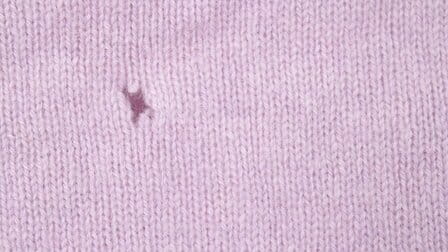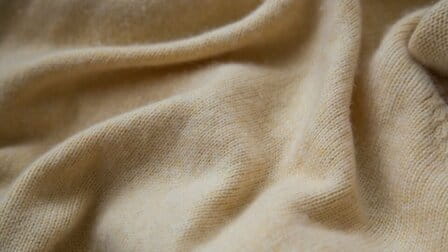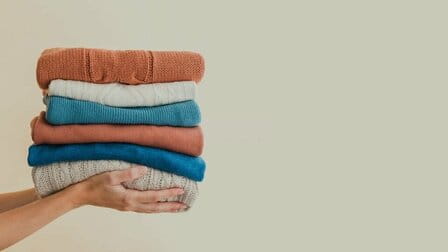Sweaters are a wardrobe staple during the colder months. They provide warmth and comfort when the temperatures drop. With so many styles and materials available, it can be tricky to know which sweaters are the softest and most comfortable to wear. This article will explore the different types of sweaters, focusing on the softest sweater materials that you'll want to cozy up in.
When it comes to keeping warm in chilly weather, few garments are as versatile and cozy as the sweater. Sweaters come in a wide variety of styles, from pullovers and cardigans to turtlenecks and vests. They are knitted or crocheted from a range of natural and synthetic yarns that provide insulating warmth.
But not all sweaters are created equal when it comes to softness. The material a sweater is made from has a big impact on its feel and comfort level. Some fabrics feel plush and smooth against the skin, while others can be scratchy and irritating. So what are the softest, most luxurious sweater materials to choose? Let's take a closer look.
Cashmere
Cashmere wool is renowned for its extreme softness and is one of the most indulgent sweater materials. Derived from the undercoat of cashmere goats, it is fine and lightweight yet provides excellent insulation. Garments made from pure cashmere feel almost silky smooth and gentle on sensitive skin. The fibers have a luxurious sheen and draping quality.
However, cashmere comes with a higher price tag as it is rare and delicate. It's also not as durable as some heartier wools when it comes to pilling or holding up to repeated wear and washing. For ultimate softness and warmth, cashmere is hard to surpass and is ideal for high-end sweaters.
Merino Wool
For those seeking a softer wool with great warmth, merino is an excellent choice. Merino wool comes from Merino sheep breeds and is finer, softer, and more lightweight than traditional wool. The fibers have a supple drape that allow merino garments to hold their shape well while remaining cozy and breathable.
Compared to regular wool, merino is less scratchy and doesn't cause irritation or itchiness for most wearers. It provides temperature regulation in both cold and warmer weather. Merino wool sweaters are a versatile mid-weight option that offers next-to-skin softness, easy care, and good durability. Brands like SmartWool and Icebreaker make popular merino sweaters.
Alpaca
Alpaca fiber is gaining recognition for its exceptional softness, breathability, and warmth. The long silky fibers of alpaca wool lack the prickly texture of sheep's wool. Alpaca fibers are hollow inside, helping provide lightweight insulation and thermoregulation. Sweaters made from alpaca yarn or alpaca blends feel supple and smooth against the skin.
Pure alpaca sweaters are durable, naturally water and stain resistant, and hypoallergenic. They don't pill easily or lose their shape. The downside is that alpaca garments are more expensive because the supply of alpaca wool is limited. For a luxuriously soft sweater with superb warmth, alpaca is an excellent material. Brands like Inca and The Aran Sweater Market offer quality alpaca knits.
Cotton
For folks who can't tolerate wool against their skin, cotton sweaters are a cozy alternative. Cotton is a plant-based fiber prized for its breathability and soft smoothness. High-quality cotton yarns like Pima and Egyptian cotton make some of the most supple, comfortable sweaters that get even softer over time.
The downside of cotton is that it lacks wool's insulation and warmth. But cotton sweaters in heavyweight knits can be quite warm, especially layered under a jacket. Cotton/cashmere or cotton/merino blends combine cotton's softness with wool's insulation. Cotton sweaters also require gentler washing and air drying to maintain their shape. Overall, cotton is ideal for soft cardigans and pullovers.
Acrylic
For budget-friendly soft sweaters, acrylic is a top choice. Acrylic is a synthetic fiber that mimics the attributes of wool while being easier to care for. Acrylic sweaters have a lightweight, plush feel and maintain their shape well. They are usually quite affordable and come in a rainbow of colors.
The trade-off is that acrylic doesn't breathe as well as natural fibers. It's also at risk of pilling more over time. But for shoppers who want an inexpensive, easy-care sweater with a soft wooly feel, acrylic is hard to beat. Many big retailers like Old Navy, Banana Republic, and J.Crew carry quality acrylic sweaters.
Angora Rabbit Hair
Sweaters knitted from the fur of angora rabbits are extraordinarily soft, lightweight, and warm. The fibers measure only about 10-15 microns in diameter, making them one of the finest natural fibers available. Angora wool has a fluffy, silky texture and beautiful sheen. An angora sweater feels like a warm, luxurious cloud enveloping your skin in softness.
However, angora wool requires gentle care as the fibers are delicate. Products made with angora have become controversial in recent years due to ethical concerns over how the rabbits are treated. But for those able to source responsibly produced angora, it makes for sublimely soft sweaters unrivaled in comfort.
FAQs about Soft Sweater Materials
What is the softest type of wool for sweaters?
The softest types of wool for sweaters include cashmere, merino wool, and alpaca wool. These wools all come from goats, sheep, and alpacas and have finer, softer fibers than traditional sheep's wool. Cashmere and alpaca, in particular, are prized for their incredible softness.
Is cotton or wool softer?
In general, wool is softer than cotton against the skin for sweaters. Merino wool and cashmere are exceptionally soft and fine wools. Cotton can feel soft, but the fibers are not as smooth and pliable as high-quality wool. However, cotton gets softer the more it is worn and washed.
Is acrylic warmer than wool?
No, acrylic is generally not as warm as wool. Even though acrylic sweaters try to mimic the feel and warmth of wool, the synthetic fibers lack the natural crimp and insulating air pockets that wool contains. So acrylic may feel soft, but wool like merino provides better temperature regulation.
What makes a sweater pill?
Pilling happens when loose fibers break away from the yarn surface of a sweater, ball up, and cling to the fabric. Sweaters pill more when the materials are lower quality or more delicate, like cashmere. Fabrics like merino wool and synthetics like acrylic pill less. Gentler washing and drying also helps reduce pilling.
Why are wool sweaters better than cotton?
Wool sweaters insulate better than cotton to keep you warmer in cool weather. The fibers trap air and wick away moisture better. Wool is also more durable, elastic, and resistant to dirt. Cotton can become stretched out more easily. However, cotton is more breathable in warmer temps and easier to wash and care for.
Conclusion
Choosing the right material for your sweater is important for both comfort and style. While cotton has its benefits, wool remains a popular choice due to its warmth, durability, and insulating properties. The softest types of wool include cashmere, merino, and alpaca, making them great options for those with sensitive skin. However, pilling can be an issue with some wool materials, so it's important to take proper care when washing and drying your sweaters. Ultimately, the decision comes down to personal preference and what works best for your individual needs.












